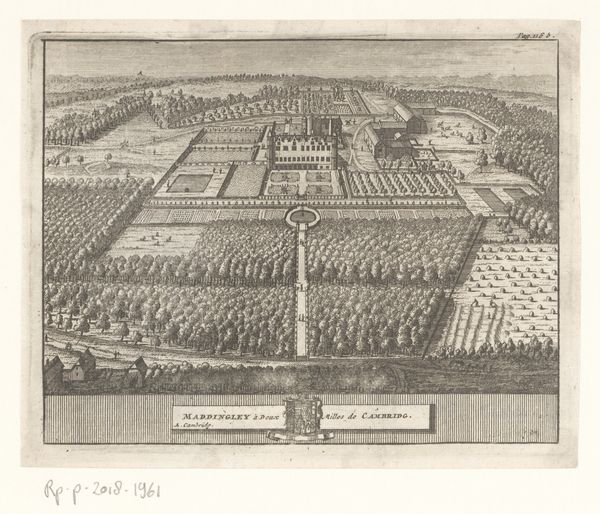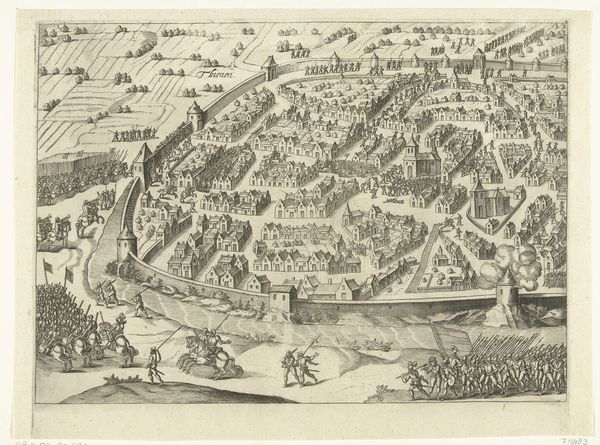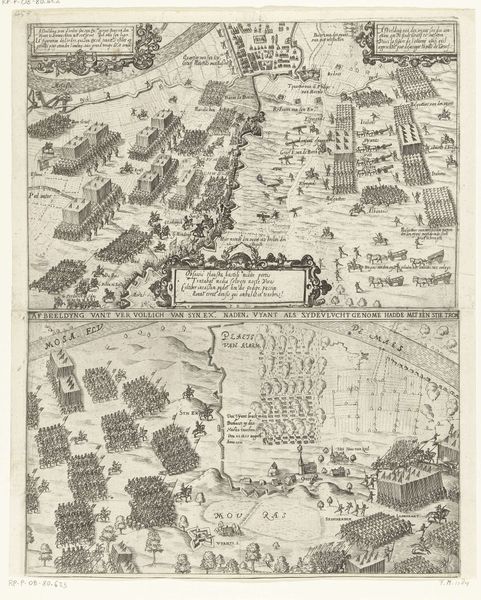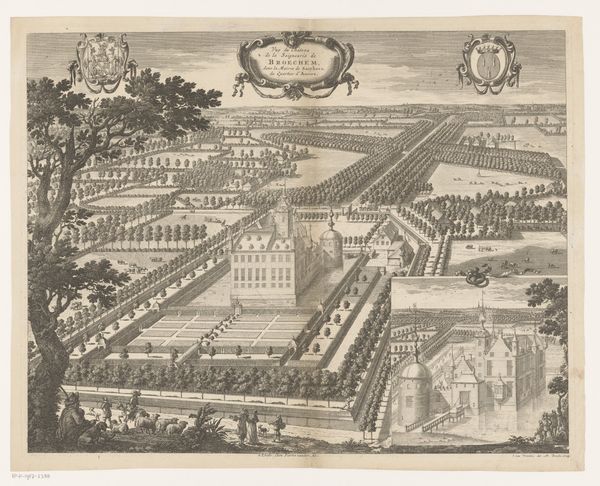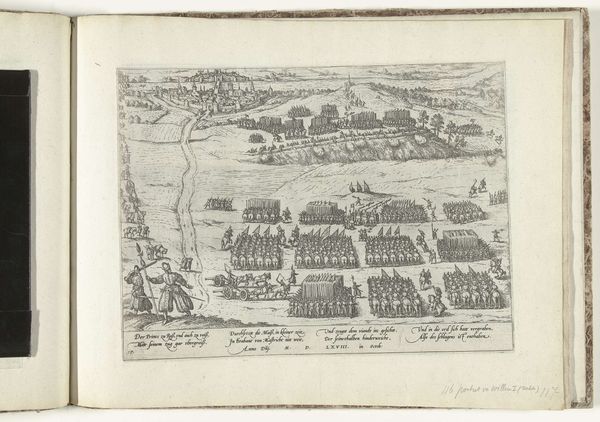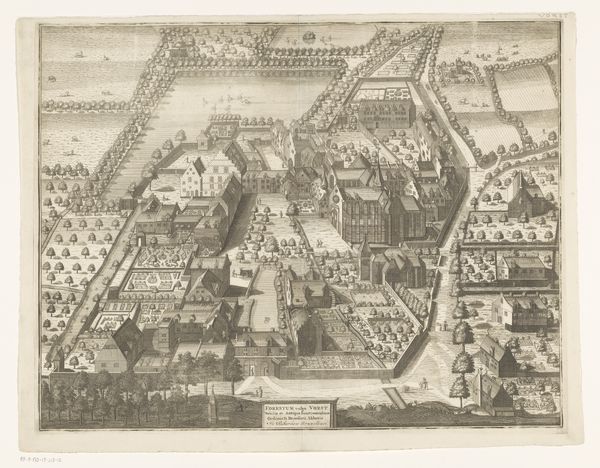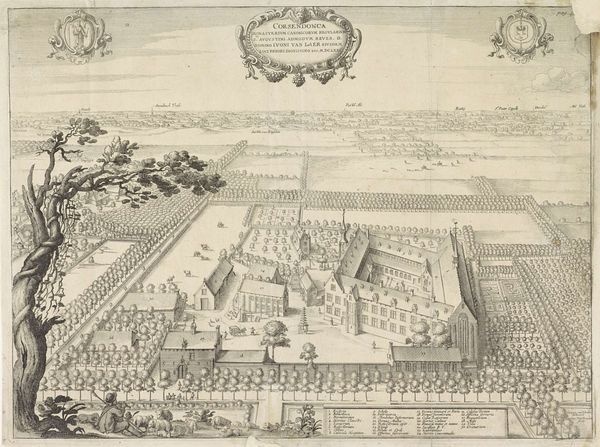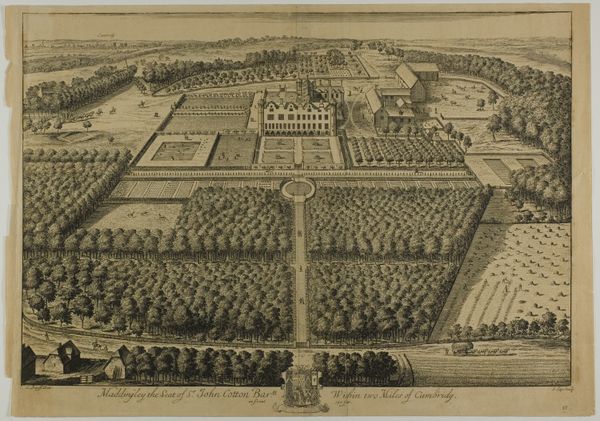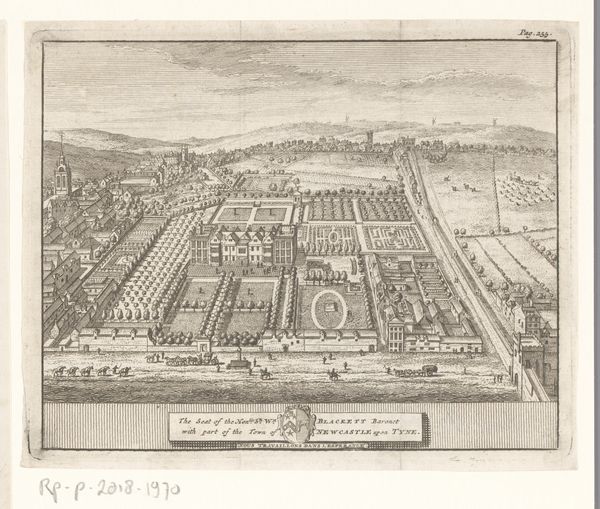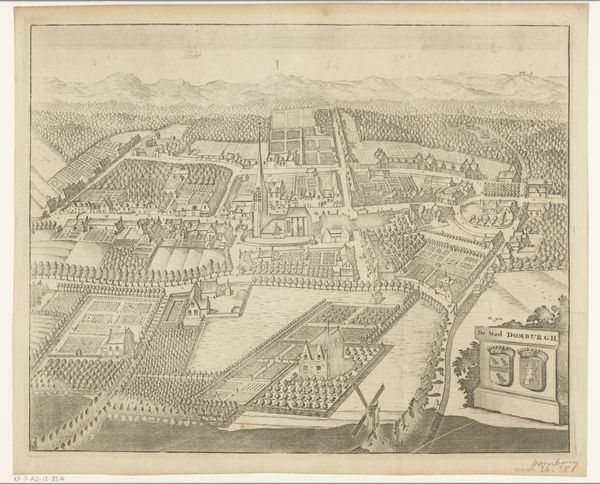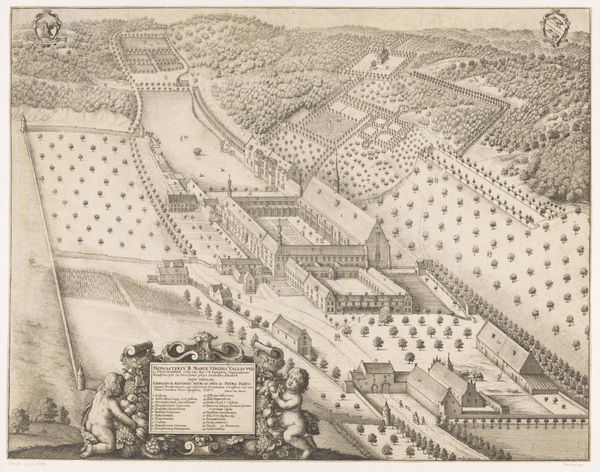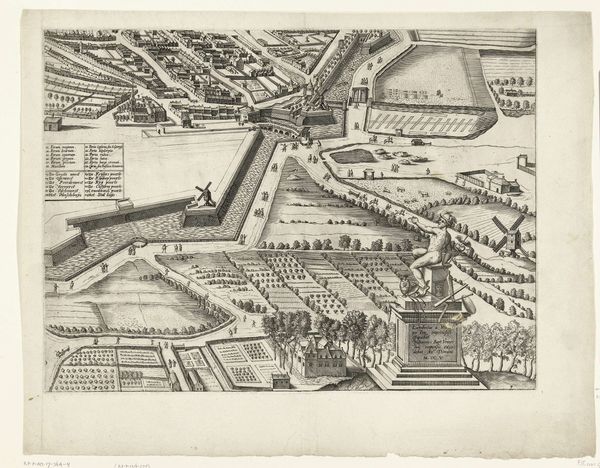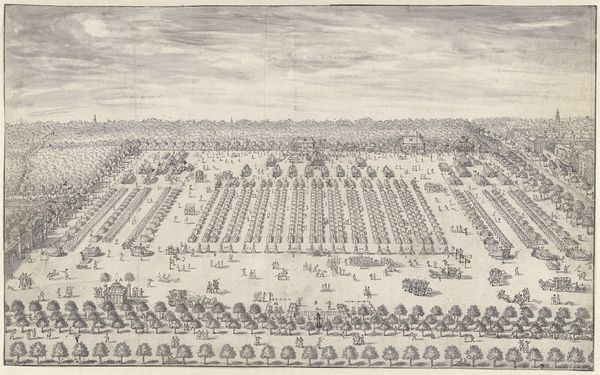
print, engraving
#
baroque
# print
#
landscape
#
cityscape
#
history-painting
#
engraving
Dimensions: height 217 mm, width 333 mm
Copyright: Rijks Museum: Open Domain
Curator: This engraving from 1642, titled "Slag bij Hickelsmey (bij Kempen), 1642," offers a bird's-eye view of a fierce battle scene. Editor: My goodness, it's so precise. It feels like I'm peering down at some meticulously constructed diorama, a battle rendered with unnerving order. What a strangely compelling tension there is! Curator: Indeed, that sense of order reflects the function of prints like these: they were often commissioned to commemorate specific military events and inform a wider audience about the strategies and outcomes of battles like Hickelsmey. Consider this as a Baroque news report. Editor: A news report etched in lines. I'm captivated by the puffballs of smoke, blooming like grotesque flowers. Is that strange for a war scene to seem… beautiful in parts? Curator: The print captures the theatricality often associated with Baroque art, despite the gritty subject matter. It portrays an attempt to impose a semblance of control on the chaotic realities of war. What’s striking, however, is that there seems to be a simultaneous acknowledgement of its destructive potential, in that same “blooming” you noticed. Editor: Right. A conflict of presentation, almost. The title box is particularly interesting. Curator: Let's discuss this title. We know that engravings of battles, much like photographs today, are never neutral records of history. They are produced by the victors or patrons, often influencing public opinion and solidifying power. Editor: It’s as if every etching mark has its own quiet political leaning. Considering how they manage their image of power, are there notable techniques employed here that we can explore further? Curator: Certainly. Consider the spatial layout—the clear delineation of troops, fortifications, and landscape features serves not only to document the battle but also to project an image of strategic brilliance and control. This idealized depiction promotes an impression of competence, reinforcing their authority. Editor: Ah, and that neat labeling – it reminds me how data is made ‘beautiful’, too – it’s organized beautifully here as the perfect projection. A visual testament to those Baroque battles. What an unexpectedly thought-provoking piece. Curator: Absolutely. It prompts us to critically engage with how historical events are represented, reminding us that images—then as now—are potent tools of power.
Comments
No comments
Be the first to comment and join the conversation on the ultimate creative platform.
